My
List |
Addition Date
|
Target
|
Mission
|
Instrument
|
Size
|

|
2007-08-29 |
NGC 1333
|
Spitzer Space Telescope
|
Infrared Spectrograph (IRS)
|
3000x2400x3 |
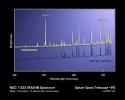
|
-
PIA09965:
-
Spitzer Sees Water Loud and Clear
Full Resolution:
TIFF
(21.6 MB)
JPEG
(987.8 kB)
|

|
2007-08-24 |
Helix Nebula
|
Spitzer Space Telescope
|
IRAC
|
4370x4070x3 |
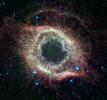
|
-
PIA09962:
-
Spitzer Celebrates Fourth Anniversary with Celestial Fireworks
Full Resolution:
TIFF
(53.36 MB)
JPEG
(2.378 MB)
|

|
2007-06-20 |
NGC 362
|
Galaxy Evolution Explorer (GALEX)
|
Far-ultraviolet Detector
Near-ultraviolet Detector
|
2250x2550x3 |

|
-
PIA09653:
-
Galaxy Evolution Explorer Spies Band of Stars
Full Resolution:
TIFF
(17.23 MB)
JPEG
(705.7 kB)
|

|
2007-06-13 |
N132D
|
Spitzer Space Telescope
|
Chandra X-ray Telescope
Infrared Array Camera (IRAC)
Multiband Imaging Photometer (MIPS)
|
1806x1200x3 |
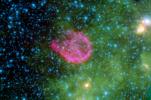
|
-
PIA09604:
-
A Supernova's Shockwaves
Full Resolution:
TIFF
(6.511 MB)
JPEG
(206.6 kB)
|

|
2007-05-17 |
Barnard 30
|
Spitzer Space Telescope
|
IRAC
|
3086x1711x3 |

|
-
PIA09412:
-
Young Stars Emerge from Orion's Head
Full Resolution:
TIFF
(15.84 MB)
JPEG
(627.4 kB)
|

|
2007-05-17 |
Barnard 30
|
Spitzer Space Telescope
|
IRAC
Multiband Imaging Photometer (MIPS)
|
3182x1282x3 |
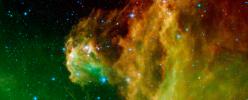
|
-
PIA09411:
-
Young Stars Emerge from Orion's Head
Full Resolution:
TIFF
(12.24 MB)
JPEG
(490.4 kB)
|

|
2007-04-27 |
Sol (our sun)
|
Solar TErrestrial RElations Observatory (STEREO)
|
SECCHI/Extreme Ultraviolet Imaging Telescope
|
1920x1080x3 |
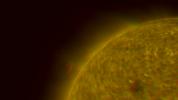
|
-
PIA09333:
-
Left Limb of North Pole of the Sun, March 20, 2007 (Anaglyph)
Full Resolution:
TIFF
(6.23 MB)
JPEG
(89.44 kB)
|

|
2007-04-27 |
Sol (our sun)
|
Solar TErrestrial RElations Observatory (STEREO)
|
SECCHI/Extreme Ultraviolet Imaging Telescope
|
1920x1080x3 |
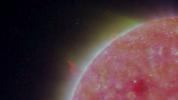
|
-
PIA09332:
-
Left Limb of North Pole of the Sun, March 20, 2007
Full Resolution:
TIFF
(6.23 MB)
JPEG
(84.33 kB)
|

|
2007-04-27 |
Sol (our sun)
|
Solar TErrestrial RElations Observatory (STEREO)
|
SECCHI/Extreme Ultraviolet Imaging Telescope
|
1920x1080x3 |
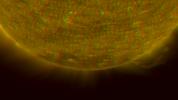
|
-
PIA09331:
-
South Pole of the Sun, March 20, 2007 (Anaglyph)
Full Resolution:
TIFF
(6.23 MB)
JPEG
(114.9 kB)
|

|
2007-04-27 |
Sol (our sun)
|
Solar TErrestrial RElations Observatory (STEREO)
|
SECCHI/Extreme Ultraviolet Imaging Telescope
|
1920x1080x3 |

|
-
PIA09330:
-
South Pole of the Sun, March 20, 2007
Full Resolution:
TIFF
(6.23 MB)
JPEG
(94.62 kB)
|

|
2007-04-27 |
Sol (our sun)
|
Solar TErrestrial RElations Observatory (STEREO)
|
SECCHI/Extreme Ultraviolet Imaging Telescope
|
1920x1080x3 |
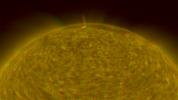
|
-
PIA09329:
-
North Pole of the Sun, March 20, 2007 (Anaglyph)
Full Resolution:
TIFF
(6.23 MB)
JPEG
(126.2 kB)
|

|
2007-04-27 |
Sol (our sun)
|
Solar TErrestrial RElations Observatory (STEREO)
|
SECCHI/Extreme Ultraviolet Imaging Telescope
|
1920x1080x3 |
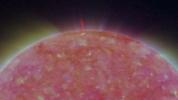
|
-
PIA09328:
-
North Pole of the Sun, March 20, 2007
Full Resolution:
TIFF
(6.23 MB)
JPEG
(94.86 kB)
|

|
2007-04-27 |
Sol (our sun)
|
Solar TErrestrial RElations Observatory (STEREO)
|
SECCHI/Extreme Ultraviolet Imaging Telescope
|
1920x1080x3 |
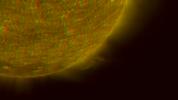
|
-
PIA09327:
-
Right Limb of the South Pole of the Sun, March 18, 2007 (Anaglyph)
Full Resolution:
TIFF
(6.23 MB)
JPEG
(99.1 kB)
|

|
2007-04-27 |
Sol (our sun)
|
Solar TErrestrial RElations Observatory (STEREO)
|
SECCHI/Extreme Ultraviolet Imaging Telescope
|
1920x1080x3 |

|
-
PIA09326:
-
Right Limb of the South Pole of the Sun, March 18, 2007
Full Resolution:
TIFF
(6.23 MB)
JPEG
(85.81 kB)
|

|
2007-04-27 |
Sol (our sun)
|
Solar TErrestrial RElations Observatory (STEREO)
|
SECCHI/Extreme Ultraviolet Imaging Telescope
|
1920x1080x3 |
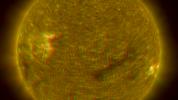
|
-
PIA09325:
-
Closer View of the Equatorial Region of the Sun, March 24, 2007 (Anaglyph)
Full Resolution:
TIFF
(6.23 MB)
JPEG
(169.6 kB)
|

|
2007-04-27 |
Sol (our sun)
|
Solar TErrestrial RElations Observatory (STEREO)
|
SECCHI/Extreme Ultraviolet Imaging Telescope
|
1920x1080x3 |
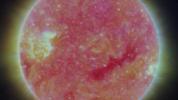
|
-
PIA09324:
-
Closer View of the Equatorial Region of the Sun, March 24, 2007
Full Resolution:
TIFF
(6.23 MB)
JPEG
(129.6 kB)
|

|
2007-04-27 |
Sol (our sun)
|
Solar TErrestrial RElations Observatory (STEREO)
|
SECCHI/Extreme Ultraviolet Imaging Telescope
|
1920x1080x3 |

|
-
PIA09323:
-
Close-up View of an Active Region of the Sun, March 23, 2007 (Anaglyph)
Full Resolution:
TIFF
(6.23 MB)
JPEG
(145.6 kB)
|

|
2007-04-27 |
Sol (our sun)
|
Solar TErrestrial RElations Observatory (STEREO)
|
SECCHI/Extreme Ultraviolet Imaging Telescope
|
1920x1080x3 |
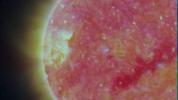
|
-
PIA09322:
-
Close-up View of an Active Region of the Sun, March 23, 2007
Full Resolution:
TIFF
(6.23 MB)
JPEG
(116 kB)
|

|
2007-04-27 |
Sol (our sun)
|
Solar TErrestrial RElations Observatory (STEREO)
|
SECCHI/Extreme Ultraviolet Imaging Telescope
|
1920x1080x3 |
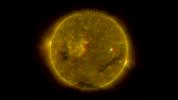
|
-
PIA09321:
-
Full Disk Image of the Sun, March 26, 2007 (Anaglyph)
Full Resolution:
TIFF
(6.23 MB)
JPEG
(91.3 kB)
|

|
2007-04-27 |
Sol (our sun)
|
Solar TErrestrial RElations Observatory (STEREO)
|
SECCHI/Extreme Ultraviolet Imaging Telescope
|
1920x1080x3 |
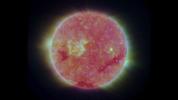
|
-
PIA09320:
-
Full Disk Image of the Sun, March 26, 2007
Full Resolution:
TIFF
(6.23 MB)
JPEG
(110.4 kB)
|

|
2007-04-18 |
Rosette Nebula
|
Spitzer Space Telescope
|
IRAC
|
639x479x3 |
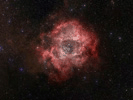
|
-
PIA09268:
-
Infrared Rose

Full Resolution:
TIFF
(919.4 kB)
JPEG
(54.85 kB)
|

|
2007-04-18 |
Rosette Nebula
|
Spitzer Space Telescope
|
IRAC
|
1669x1439x3 |
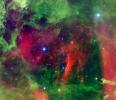
|
-
PIA09267:
-
Every Rose has a Thorn
Full Resolution:
TIFF
(7.217 MB)
JPEG
(286.2 kB)
|

|
2007-04-18 |
Rosette Nebula
|
Spitzer Space Telescope
|
|
3300x2400x3 |
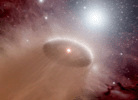
|
-
PIA09266:
-
Highway to the Danger Zone (Artist Concept)

Full Resolution:
TIFF
(23.76 MB)
JPEG
(244.6 kB)
|

|
2007-02-12 |
Helix Nebula
|
Spitzer Space Telescope
|
IRAC
Multiband Imaging Photometer (MIPS)
|
4279x3559x3 |

|
-
PIA09178:
-
Comets Kick up Dust in Helix Nebula
Full Resolution:
TIFF
(45.69 MB)
JPEG
(1.944 MB)
|

|
2006-08-15 |
Orion
|
Spitzer Space Telescope
|
IRAC
|
3000x1800x3 |
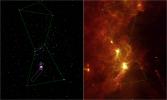
|
-
PIA08656:
-
Infrared Spotlight on Orion's Sword
Full Resolution:
TIFF
(16.2 MB)
JPEG
(328.7 kB)
|

|
2006-08-15 |
Orion
|
Spitzer Space Telescope
|
IRAC
|
19937x6972x3 |
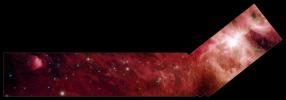
|
-
PIA08655:
-
A Slice of Orion
Full Resolution:
TIFF
(417 MB)
JPEG
(5.782 MB)
|

|
2006-08-15 |
Orion
|
Spitzer Space Telescope
|
IRAC
|
2240x2086x3 |
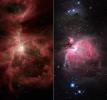
|
-
PIA08654:
-
The Infrared Hunter
Full Resolution:
TIFF
(14.03 MB)
JPEG
(324.9 kB)
|

|
2006-08-15 |
Orion
|
Spitzer Space Telescope
|
IRAC
|
3220x6000x3 |

|
-
PIA08653:
-
The Sword of Orion

Full Resolution:
TIFF
(57.96 MB)
JPEG
(738.3 kB)
|

|
2006-02-15 |
Sol (our sun)
|
SOHO
|
|
2448x2448x3 |
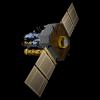
|
-
PIA18170:
-
SOHO Spacecraft (Artist's Concept)
Full Resolution:
TIFF
(17.98 MB)
JPEG
(266.8 kB)
|

|
2006-01-19 |
Helix Nebula
|
Hubble Space Telescope
Spitzer Space Telescope
|
Advanced Camera for Surveys
Infrared Array Camera (IRAC)
|
3125x3497x3 |

|
-
PIA03678:
-
The Mark of a Dying Star
Full Resolution:
TIFF
(32.78 MB)
JPEG
(1.165 MB)
|

|
2006-01-09 |
Helix Nebula
|
Spitzer Space Telescope
|
IRAC
|
2400x2794x3 |

|
-
PIA03294:
-
The Infrared Helix
Full Resolution:
TIFF
(20.14 MB)
JPEG
(1.082 MB)
|

|
2005-12-22 |
Carina Nebula
|
Cassini-Huygens
|
ISS - Wide Angle
|
1020x1020x1 |
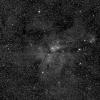
|
-
PIA07773:
-
Cassini's Galactic Aspirations
Full Resolution:
TIFF
(1.042 MB)
JPEG
(309.2 kB)
|

|
2005-12-01 |
Crab Nebula
|
Hubble Space Telescope
|
WFPC2
|
3864x3864x3 |
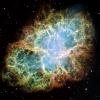
|
-
PIA03606:
-
Most Detailed Image of the Crab Nebula
Full Resolution:
TIFF
(44.79 MB)
JPEG
(1.926 MB)
|

|
2005-11-29 |
55 Cancri
|
|
|
3000x2400x3 |
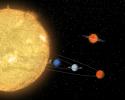
|
-
PIA03604:
-
Itsy Bitsy Solar System (Artist's Concept)
Full Resolution:
TIFF
(21.6 MB)
JPEG
(393.8 kB)
|

|
2005-11-02 |
|
Hubble Space Telescope
|
WFPC2
|
1518x1497x3 |
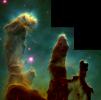
|
-
PIA12108:
-
Embryonic Stars Emerge from Interstellar "Eggs"
Full Resolution:
TIFF
(6.83 MB)
JPEG
(195 kB)
|

|
2005-07-25 |
NGC 4625
|
Galaxy Evolution Explorer (GALEX)
|
Ultraviolet/Visible Camera
|
872x872x3 |
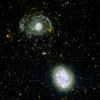
|
-
PIA03541:
-
Look at my Arms!
Full Resolution:
TIFF
(2.284 MB)
JPEG
(107.3 kB)
|

|
2005-07-25 |
NGC 4625
|
Galaxy Evolution Explorer (GALEX)
|
Ultraviolet/Visible Camera
|
872x872x3 |
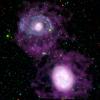
|
-
PIA03540:
-
Galactic Halos of Hydrogen
Full Resolution:
TIFF
(2.284 MB)
JPEG
(92.95 kB)
|

|
2005-07-25 |
NGC 4625
|
Galaxy Evolution Explorer (GALEX)
|
Ultraviolet/Visible Camera
|
872x872x3 |
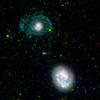
|
-
PIA03536:
-
Hello to Arms
Full Resolution:
TIFF
(2.284 MB)
JPEG
(93.92 kB)
|

|
2005-07-13 |
Cygnus
|
W. M. Keck Observatory
|
Keck I Telescope
|
3000x2400x3 |
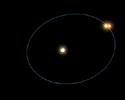
|
-
PIA03521:
-
Circus Family of Stars (Artist's Concept)

Full Resolution:
TIFF
(21.6 MB)
JPEG
(147.3 kB)
|

|
2005-07-13 |
Cygnus
|
W. M. Keck Observatory
|
Keck I Telescope
|
640x480x3 |
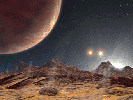
|
-
PIA03520:
-
Land of Three Suns (Artist's Concept Animation)

Full Resolution:
TIFF
(23.04 MB)
JPEG
(574 kB)
|

|
2005-05-30 |
Carina Nebula
|
Spitzer Space Telescope
|
IRAC
|
6614x5196x3 |
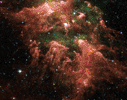
|
-
PIA03515:
-
All Pillars Point to Eta

Full Resolution:
TIFF
(103.1 MB)
JPEG
(3.749 MB)
|

|
2005-05-05 |
NGC 5128
|
Galaxy Evolution Explorer (GALEX)
|
GALEX Telescope
|
1279x1279x3 |
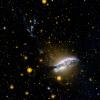
|
-
PIA07912:
-
NGC 5128 (Centaurus-A)
Full Resolution:
TIFF
(4.913 MB)
JPEG
(173.9 kB)
|

|
2005-05-05 |
NGC 1291
|
Galaxy Evolution Explorer (GALEX)
|
GALEX Telescope
|
1412x706x3 |
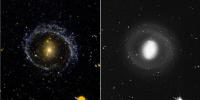
|
-
PIA07910:
-
Barred Ring Galaxy NGC 1291
Full Resolution:
TIFF
(2.996 MB)
JPEG
(121.6 kB)
|

|
2005-05-05 |
NGC 335
|
Galaxy Evolution Explorer (GALEX)
|
GALEX Telescope
|
1216x608x3 |
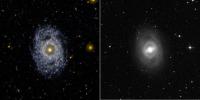
|
-
PIA07909:
-
Face on Barred and Ringed Spiral Galaxy NGC 3351
Full Resolution:
TIFF
(2.221 MB)
JPEG
(89.44 kB)
|

|
2005-05-05 |
NGC 1851
|
Galaxy Evolution Explorer (GALEX)
|
GALEX Telescope
|
1008x1008x3 |
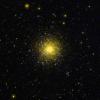
|
-
PIA07908:
-
Globular Cluster NGC 1851 in the Southern Constellation Columba
Full Resolution:
TIFF
(3.052 MB)
JPEG
(129.9 kB)
|

|
2005-05-05 |
NGC 3190
|
Galaxy Evolution Explorer (GALEX)
|
GALEX Telescope
|
936x936x3 |
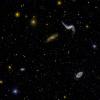
|
-
PIA07907:
-
Diverse Group of Galaxy Types, NGC 3190 Field
Full Resolution:
TIFF
(2.632 MB)
JPEG
(95.57 kB)
|

|
2005-05-05 |
Stephan's Quintet,NGC 7331
|
Galaxy Evolution Explorer (GALEX)
|
GALEX Telescope
|
1692x1020x3 |
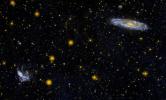
|
-
PIA07905:
-
Interacting Group of Galaxies Known as Stephan's Quintet
Full Resolution:
TIFF
(5.186 MB)
JPEG
(251.1 kB)
|

|
2005-05-05 |
NGC 3344
|
Galaxy Evolution Explorer (GALEX)
|
GALEX Telescope
|
664x664x3 |
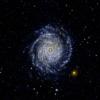
|
-
PIA07904:
-
Large Face on Spiral Galaxy NGC 3344
Full Resolution:
TIFF
(1.324 MB)
JPEG
(53.6 kB)
|

|
2005-05-05 |
Helix Nebula
|
Galaxy Evolution Explorer (GALEX)
|
GALEX Telescope
|
2448x1880x3 |
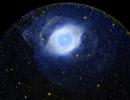
|
-
PIA07902:
-
Planetary Nebula NGC 7293 also Known as the Helix Nebula
Full Resolution:
TIFF
(13.82 MB)
JPEG
(579.5 kB)
|

|
2005-05-05 |
NGC 1365
|
Galaxy Evolution Explorer (GALEX)
|
GALEX Telescope
|
664x664x3 |
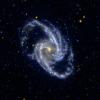
|
-
PIA07901:
-
Barred Spiral Galaxy NGC 1365
Full Resolution:
TIFF
(1.324 MB)
JPEG
(52.1 kB)
|

|
2005-05-05 |
NGS 1097
|
Galaxy Evolution Explorer (GALEX)
|
GALEX Telescope
|
656x656x3 |
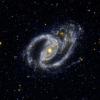
|
-
PIA07900:
-
A Barred Spiral
Galaxy, and the Small Elliptical Companion Galaxy NGC 1097A
Full Resolution:
TIFF
(1.293 MB)
JPEG
(61.52 kB)
|

|
2005-04-11 |
NGC 300
|
Galaxy Evolution Explorer (GALEX)
|
Ultraviolet/Visible Camera
|
1273x967x3 |
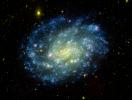
|
-
PIA07828:
-
Classic Galaxy with Glamour
Full Resolution:
TIFF
(2.546 MB)
JPEG
(148.3 kB)
|

|
2005-02-11 |
Ring Nebula
|
Spitzer Space Telescope
|
IRAC
|
2104x1726x3 |
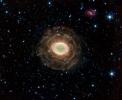
|
-
PIA07343:
-
Ring Beholds a Delicate Flower

Full Resolution:
TIFF
(7.244 MB)
JPEG
(304.1 kB)
|

|
2005-01-12 |
Trifid Nebula
|
Spitzer Space Telescope
|
IRAC
Multiband Imaging Photometer (MIPS)
|
2841x1846x3 |
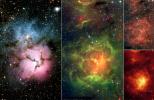
|
-
PIA07225:
-
New Views of a Familiar Beauty
Full Resolution:
TIFF
(15.73 MB)
JPEG
(765 kB)
|

|
2005-01-11 |
Encke
|
Spitzer Space Telescope
|
MIPS
|
2154x2154x3 |
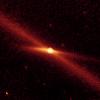
|
-
PIA07222:
-
Riding a Trail of Debris
Full Resolution:
TIFF
(6.884 MB)
JPEG
(215.1 kB)
|

|
2004-08-09 |
NGC 246
|
Spitzer Space Telescope
|
IRAC
|
1018x1018x3 |

|
-
PIA06755:
-
Ring of Stellar Death
Full Resolution:
TIFF
(2.561 MB)
JPEG
(98.24 kB)
|

|
2004-06-28 |
NGC 7331
|
Spitzer Space Telescope
|
IRAC
|
1239x805x3 |
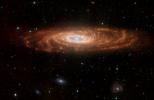
|
-
PIA06322:
-
Morphology of Our Galaxy's 'Twin'
Full Resolution:
TIFF
(2.02 MB)
JPEG
(88.38 kB)
|

|
2004-06-01 |
Centaurus A
|
Spitzer Space Telescope
|
IRAC
|
1627x1227x3 |
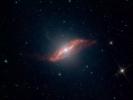
|
-
PIA06007:
-
The Making of a Galactic Parallelogram
Full Resolution:
TIFF
(4.383 MB)
JPEG
(149.7 kB)
|

|
2004-05-27 |
RCW 49 Nebula
|
Spitzer Space Telescope
|
IRAC
|
1520x1520x3 |
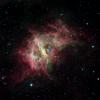
|
-
PIA05989:
-
Stellar Jewels Shine in New Spitzer Image
Full Resolution:
TIFF
(5.235 MB)
JPEG
(195.4 kB)
|

|
2004-03-15 |
Sedna
|
|
Samuel Oschin Telescope
|
640x480x5 |
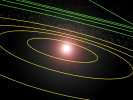
|
-
PIA05565:
-
Sedna Orbit Animation

Full Resolution:
|

|
2004-03-15 |
Sedna
|
|
Samuel Oschin Telescope
|
2499x2499x3 |
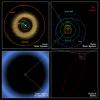
|
-
PIA05569:
-
Sedna Orbit Comparisons
Full Resolution:
TIFF
(2.507 MB)
JPEG
(554.8 kB)
|

|
2004-03-15 |
Sedna
|
|
Samuel Oschin Telescope
|
2480x900x3 |
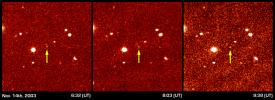
|
-
PIA05568:
-
Sedna Discovery Image
Full Resolution:
TIFF
(2.333 MB)
JPEG
(564.4 kB)
|

|
2004-03-15 |
Sedna
|
|
Samuel Oschin Telescope
|
3000x2400x3 |

|
-
PIA05567:
-
Sedna Size Comparisons (Artist's Concept)
Full Resolution:
TIFF
(11.78 MB)
JPEG
(695 kB)
|

|
2004-03-15 |
Sedna
|
|
Samuel Oschin Telescope
|
2000x1500x3 |
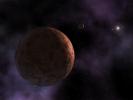
|
-
PIA05566:
-
Artist's Concept of Sedna
Full Resolution:
TIFF
(4.921 MB)
JPEG
(103.1 kB)
|

|
2004-03-13 |
Sol (our sun)
|
Mars Exploration Rover (MER)
|
Panoramic Camera
|
1080x360x1 |
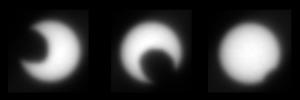
|
-
PIA05554:
-
Martian Moon Eclipses Sun, in Stages
Full Resolution:
TIFF
(206 kB)
JPEG
(13.92 kB)
|

|
2004-03-12 |
Sol (our sun)
|
Mars Exploration Rover (MER)
|
Panoramic Camera
|
360x360x5 |
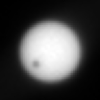
|
-
PIA05556:
-
Deimos Crosses Face of Sun

Full Resolution:
|

|
2004-03-12 |
Sol (our sun)
|
Mars Exploration Rover (MER)
|
Panoramic Camera
|
360x360x5 |
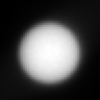
|
-
PIA05553:
-
Martian Moon Blocks Sun

Full Resolution:
|

|
2004-03-08 |
Sol (our sun)
|
Mars Exploration Rover (MER)
|
Panoramic Camera
|
399x198x3 |
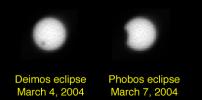
|
-
PIA05518:
-
Martian Eclipses: Deimos and Phobos
Full Resolution:
TIFF
(44.62 kB)
JPEG
(10.21 kB)
|

|
2004-01-13 |
Tarantula Nebula
|
Spitzer Space Telescope
|
IRAC
|
1384x908x3 |
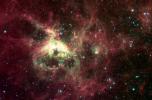
|
-
PIA05062:
-
The Tarantula Nebula
Full Resolution:
TIFF
(3.778 MB)
JPEG
(167.3 kB)
|

|
2004-01-10 |
Sol (our sun)
|
Mars Exploration Rover (MER)
|
Panoramic Camera
|
1600x1200x1 |
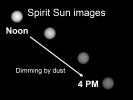
|
-
PIA05041:
-
Martian Sunsets More Than Just Pretty
Full Resolution:
TIFF
(188.5 kB)
JPEG
(68.7 kB)
|

|
2003-02-11 |
Dumbbell Nebula
|
Hubble Space Telescope
|
WFPC2
|
1262x750x3 |
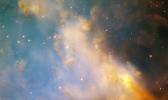
|
-
PIA04249:
-
Close-up of M27, the Dumbbell Nebula
Full Resolution:
TIFF
(2.843 MB)
JPEG
(75.6 kB)
|

|
2001-02-17 |
Sol (our sun)
|
SOHO
|
Extreme Ultraviolet Imaging Telescope
|
1067x1067x3 |
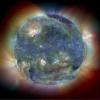
|
-
PIA03150:
-
Color Composite of Solar Features
Full Resolution:
TIFF
(3.508 MB)
JPEG
(108.6 kB)
|

|
2001-02-17 |
Sol (our sun)
|
SOHO
|
Extreme Ultraviolet Imaging Telescope
|
2100x2034x3 |
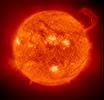
|
-
PIA03149:
-
Handle-shaped Prominence
Full Resolution:
TIFF
(4.315 MB)
JPEG
(409.1 kB)
|

|
1999-12-30 |
Edge-on Galaxy ESO 510 G13
|
Hubble Space Telescope
|
WFPC2
|
1435x732x3 |
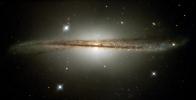
|
-
PIA04213:
-
Edge-on Galaxy
Full Resolution:
TIFF
(2.843 MB)
JPEG
(100.8 kB)
|

|
1999-12-15 |
Galaxy NGC 4013
|
Hubble Space Telescope
|
WFPC2
|
1041x1018x3 |
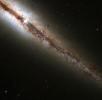
|
-
PIA04217:
-
Galaxy NGC 4013
Full Resolution:
TIFF
(2.811 MB)
JPEG
(74.83 kB)
|

|
1999-12-10 |
Ant nebula
|
Hubble Space Telescope
|
WFPC2
|
1072x708x3 |
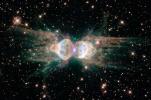
|
-
PIA04216:
-
Ant Nebula
Full Resolution:
TIFF
(2.008 MB)
JPEG
(143.4 kB)
|

|
1999-12-09 |
Antennae or Ring Tail galaxies
|
Two Micron All Sky Survey (2MASS)
|
Two Micron All Sky Survey (2MASS)
|
456x586x3 |

|
-
PIA04205:
-
Antennae
Full Resolution:
TIFF
(674.6 kB)
JPEG
(54.88 kB)
|

|
1999-12-07 |
Galaxy NGC 3310
|
Hubble Space Telescope
|
WFPC2
|
849x933x3 |

|
-
PIA04229:
-
Starburst Galaxy NGC 3310
Full Resolution:
TIFF
(1.858 MB)
JPEG
(102.3 kB)
|

|
1999-12-03 |
Ghost Head Nebula
|
Hubble Space Telescope
|
WFPC2
|
674x674x3 |
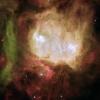
|
-
PIA04226:
-
Ghost Head Nebula
Full Resolution:
TIFF
(1.364 MB)
JPEG
(49.94 kB)
|

|
1999-12-03 |
N44C nebula
|
Hubble Space Telescope
|
WFPC2
|
1460x1502x3 |

|
-
PIA04225:
-
N44C Nebula
Full Resolution:
TIFF
(6.034 MB)
JPEG
(275.2 kB)
|

|
1999-12-03 |
Galaxy NGC 1850
|
Hubble Space Telescope
|
WFPC2
|
758x580x3 |
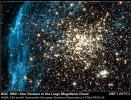
|
-
PIA04221:
-
Galaxy NGC 1850
Full Resolution:
TIFF
(1.321 MB)
JPEG
(140.6 kB)
|

|
1999-12-02 |
Rotten Egg Nebula
|
Hubble Space Telescope
|
WFPC2
|
843x794x3 |
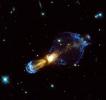
|
-
PIA04228:
-
Rotten Egg Nebula
Full Resolution:
TIFF
(818.3 kB)
JPEG
(56.88 kB)
|

|
1999-12-02 |
Orion Nebula
|
Hubble Space Telescope
|
WFPC2
|
1074x895x3 |
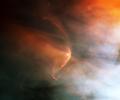
|
-
PIA04227:
-
Orion Nebula and Bow Shock
Full Resolution:
TIFF
(2.805 MB)
JPEG
(61.4 kB)
|

|
1999-12-02 |
Trifid Nebula
|
Two Micron All Sky Survey (2MASS)
|
Two Micron All Sky Survey (2MASS)
|
930x1408x3 |

|
-
PIA04220:
-
Trifid Nebula
Full Resolution:
TIFF
(3.452 MB)
JPEG
(314.9 kB)
|

|
1999-12-02 |
Galaxy NGC 3079
|
Hubble Space Telescope
|
WFPC2
|
2329x1845x3 |

|
-
PIA04209:
-
Galaxy NGC 3079
Full Resolution:
TIFF
(5.519 MB)
JPEG
(351.2 kB)
|

|
1999-12-02 |
Galaxy NGC 3079
|
Hubble Space Telescope
|
WFPC2
|
434x434x3 |
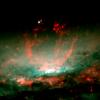
|
-
PIA04208:
-
Galaxy NGC 3079
Full Resolution:
TIFF
(305.3 kB)
JPEG
(22.15 kB)
|

|
1999-12-02 |
Stephan's Quintet,NGC 7319, NGC 7318B, NGC 7318A
|
Hubble Space Telescope
|
WFPC2
|
2400x3000x3 |

|
-
PIA04201:
-
Stephan's Quintet
Full Resolution:
TIFF
(12.15 MB)
JPEG
(521 kB)
|

|
1999-12-01 |
Galaxy NGC 4622
|
Hubble Space Telescope
|
WFPC2
|
853x970x3 |

|
-
PIA04224:
-
Backwards Spiral Galaxy
Full Resolution:
TIFF
(2.485 MB)
JPEG
(97.62 kB)
|

|
1999-12-01 |
Galaxy NGC 1512
|
Hubble Space Telescope
|
WFPC2
Faint Object Camera
Near Infrared Camera
Multi-Object Spectrometer
|
600x650x3 |

|
-
PIA04219:
-
Galaxy NGC 1512
Full Resolution:
TIFF
(972.2 kB)
JPEG
(50.1 kB)
|

|
1999-12-01 |
Horsehead Nebula
|
Hubble Space Telescope
|
WFPC2
|
853x620x3 |
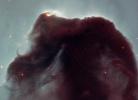
|
-
PIA04215:
-
Horsehead Nebula
Full Resolution:
TIFF
(1.405 MB)
JPEG
(48.75 kB)
|

|
1999-12-01 |
Doradus Nebula
|
Hubble Space Telescope
|
WFPC2
|
2508x1790x3 |
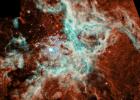
|
-
PIA04200:
-
Doradus Nebula
Full Resolution:
TIFF
(12.24 MB)
JPEG
(608.9 kB)
|

|
1999-08-08 |
1989N2
|
Voyager
|
VG ISS - Narrow Angle
|
635x315x1 |
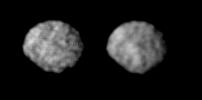
|
-
PIA02206:
-
Satellite 1989N2
Full Resolution:
TIFF
(45.68 kB)
JPEG
(7.233 kB)
|

|
1996-09-13 |
Sol (our sun)
|
Voyager
|
VG ISS - Wide Angle
|
4000x1200x3 |

|
-
PIA00451:
-
Solar System Portrait - 60 Frame Mosaic
Full Resolution:
TIFF
(1.124 MB)
JPEG
(166.4 kB)
|

|
1996-09-13 |
Sol (our sun)
|
Voyager
|
VG ISS - Wide Angle
|
3430x2650x3 |
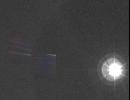
|
-
PIA00450:
-
Solar System Portrait - View of the Sun, Earth and Venus
Full Resolution:
TIFF
(8.676 MB)
JPEG
(515.8 kB)
|

 Planetary Data System
Planetary Data System













































































































